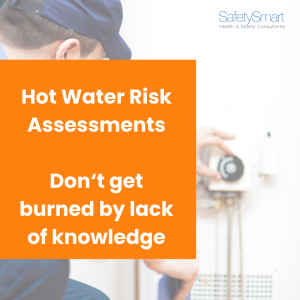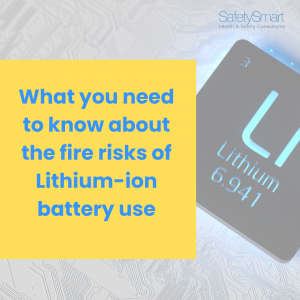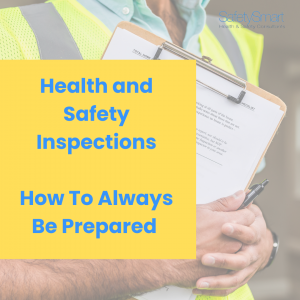Internal Investigation – Is yours legally compliant?
13th June 2016 Posted in Blogs

Internal Investigation – Is yours legally compliant?
• If you have an accident or near miss, how effective is your internal investigation protocol in identifying the causes?
• Is your internal investigation process compliant with your Health and Safety at Work Act 1974 responsibilities?
• DID YOU KNOW: Legal Professional Privilege (LPP) can make your internal investigation report confidential so that the HSE/regulator is not entitled to a copy if they investigate an incident, even with the most serious of accidents.
Introduction
Organisations have an ongoing duty of care under the Health and Safety at Work Act (HSWA) 1974 to ensure the health and safety of their employees and others by identifying hazards, quantifying the associated risks and implementing control measures to prevent future incidents. Equally, it is essential for organisations to conduct through and methodical investigations when workplace incidents do occur.
Importance of Professionally led Internal Investigations
An important element in organisations ensuring that they satisfy and sustain legislative/regulatory standards and comply with these requirements is an analysis of the immediate and systemic causes of any incident after it has occurred.
Most organisations either have some internal investigation specialism in house, or outsource the task to their health and safety consultants and/or their retained panel solicitors. All health and safety mangers are aware that properly led, structured and in depth internal investigations can assist in facilitating an organisation’s understanding of essential required improvements in the proper management of risk.
Legal Professional Privilege
The added advantage in having a retained legal firm on hand to deal with regulatory matters is that in certain circumstances, an internal investigation report can be covered by legal professional privilege, (LLP). It is only possible to justify LLP in situations where it can be argued that litigation can be anticipated, such as after an incident became reportable under the Reporting of Injuries, Diseases and Dangerous Occurrences Regulations 2013 (RIDDOR) provisions. In such circumstances, there is a distinct possibility that the HSE/Regulator will investigate further which could result in litigation. In those circumstances, it is possible to produce a “warts and all” internal investigation with no concern that it may fall into the wrong hands due to it being protected by LPP.
Disclosed Internal Investigations which are not Privileged
We have extensive experience of dealing with fatal/serous accidents where unfortunately, a damning internal investigation report has been produced post accident and then purposively given to the regulator in the misguided and naïve hope that the disclosure of the document will be interpreted as co-operating with the investigation which will then mitigate the organisation’s position and reduce the likelihood of prosecution. Unfortunately, the reality of disclosing such internal investigations is actually the opposite – the regulator will often use the document as the basis of their investigation and will often refer to it at the sentencing hearing to demonstrate the organisation’s accepted failings.
Regulators’ Powers to Compel Disclosure of Internal Investigation Reports
Alternatively, if the report is requested by the regulator using their Section 20 HSWA 1974 powers to compel the production of documentation, then a document that was produced for the right reasons, to learn the causes of the accident, can, as outlined above, be used on an evidential basis against the organisation who was responsible enough to commission the report to identify their own failings which contributed to the incident.
Legal Professional Privilege acts as a Shield to Disclosure
However, the way in which LPP works is that if the organisation’s solicitor has instigated the report by requesting the internal investigation be prepared “in contemplation of litigation”, then the report produced is not disclosable to the regulator as it constitutes legally privileged and therefore confidential documentation. The organisation and their solicitor can therefore refuse to disclose the document on these grounds and the regulator has to accept that they are not entitled to have sight of the document.
Change in Emphasis to Internal Investigation Reports
There has been a sea change in sentencing as turnover and risk now determine sentence, rather than causation of actual harm. In light of this, it is essential that all post accident/near miss review procedures ensure that all risks are properly analysed and not just the RIDDOR reportable accident and immediate causes that has triggered the reporting criteria. Often this means a more thorough investigation that considers all the risks that contributed to the accident and not a conclusion that focuses on “employee error” or a comment as straight forward as “employee failed to comply with the safe system of work that was in place at the time of the accident”.
Safety Smart can provide clients with general guidance for organisation’s internal investigations or specific drafting of key internal investigation documentation and training if required. For example, a key consideration from the outset is to consider the purpose of the internal investigation, to inform the board about the background and circumstances of an incident to enable the organisation to state publicly that it has investigated the matter and taken a proportionate response, to determine whether or not there is a civil claim, to consider the necessity for potential disciplinary proceedings, to enable a firm to comply with its regulatory obligations including reporting obligations and possibly to discourage regulators from instituting a formal investigation.
Conclusion
A well developed, thorough internal investigation process provides the cornerstone of a responsible organisation’s integrated programme of constant development and improvement to ensure extensive compliance rather than a reactionary sporadic response to an incident as and when it occurs.
The new health and safety sentencing regime introduced earlier in 2016 requires a more thorough consideration of not only the outcome of a health and safety incident, e.g. a broken leg, but also possible risks that didn’t thankfully eventuate, like in the sentencing case that we have referred to involving the Defendant Company, Altin Homes. In that case, the company was fined £40,000 plus prosecution costs for the existence of risk where there was no actual accident. Organisations who have properly integrated internal specialism in identifying risk for the purposes of internal investigations are less likely to be prosecuted when a RIDDOR reportable incident does occur, as they can demonstrate that they have previously identified and properly managed and controlled risks in their workplace.
Resource Hub

Smart Resource: Hot Water Risk Assessments

Smart Resource: What you need to know about the fire risks of Lithium-ion battery use

Smart Resource: How to always be prepared for H&S Inspections

Smart Resource: UK School Closures What you need to know
Request A Call!
Want a free no-obligation consultation? Fill in the form below and we'll give you a call!